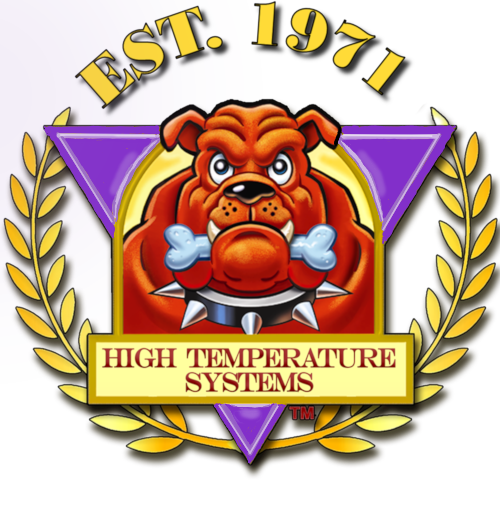Cover Gas in Secondary Aluminum Melting
Benefits of an Inert Atmosphere
Introduction
In the realm of secondary aluminum melting, refining, and recycling, the utilization of cover gas stands as a pivotal technique for enhancing process efficiency and product quality. Cover gas, essentially an inert gas blanket, serves to shield molten aluminum from the detrimental effects of atmospheric oxygen interaction, mitigating oxidation and dross formation. This technical overview aims to provide melt supervisors and technicians with a comprehensive understanding of cover gas applications, encompassing gas selection, volume, flow rates, furnace equipping, as well as the associated benefits and hazards. A particular emphasis will be placed on integrating cover gas capabilities into circulation and transfer pumps, simplifying the cover gas delivery system.
Gas Type
The selection of an appropriate cover gas hinges upon the specific requirements of the aluminum melting operation. Commonly employed gases include nitrogen (N2), argon (Ar), and mixtures thereof. While nitrogen offers economic viability, argon’s superior inertness and density(1) renders it preferable for high-quality aluminum production.
Gas Volume and Flow Rates
The volume of cover gas required is contingent upon the furnace dimensions and the desired level of atmospheric isolation. A gas volume sufficient to create a positive pressure within the furnace headspace is recommended for nitrogen because of its neutral density relative to air. Owing to its higher density, argon will sink and displace air at the surface of the molten bath. Flow rates should be regulated to maintain a consistent gas blanket while minimizing excessive gas consumption.
Furnace Equipping
Retrofitting a furnace for cover gas operation necessitates the installation of a gas delivery system comprising a gas source, pressure regulators, flow meters, and distribution lances. The furnace should be equipped with a sealing mechanism to prevent gas leakage and ensure effective atmospheric isolation. Since dross formation rates are highest in areas with the greatest surface turbulence (and therefore greatest area exposed to atmosphere), using cover gas in the pump well, charge well, and vortex bowl provide greatest impact to overall dross reduction.
Furnace Equipping with Integrated Cover Gas Pumps
While traditional cover gas delivery systems often rely on lances or other dispersion mechanisms, advancements in pump technology have led to integrating cover gas capabilities directly into circulation and transfer pumps. This innovative approach eliminates the need for additional gas distribution equipment, streamlining the furnace setup and enhancing operational efficiency. High Temperature Systems offer cover gas options for both transfer and circulation pumps(2). These pumps use a unique combined shaft support / enclosure with an inert gas bleed that keeps the shaft in an inert atmosphere, reducing dross generation at the interface between the rotating shaft and the metal line. The cover gas pumps also provide the pump well with cover gas by venting the shaft enclosure below the metal line.
Closed-Style Pump with Enclosed Shaft Support
The close-style pump has an enclosed shaft that is housed in a protective refractory sleeve. While this prevents easy access for inspection and cleaning, the pump is optionally fitted with an inert gas feed.
Benefits of Cover Gas Application
Reduced Oxidation and Dross Formation: The primary benefit of cover gas lies in its ability to curtail aluminum oxidation and the accompanied generation of dross.losses.
Improved Melt Cleanliness: By minimizing atmospheric interaction, cover gas contributes to enhanced melt cleanliness, resulting in superior cast products with reduced porosity and improved mechanical properties.
Enhanced Energy Efficiency: The insulation provided by the cover gas blanket serves to reduce heat losses from the melt surface outside the hearth in the pump and charge wells, augmenting energy efficiency and lowering operational costs.
Simplified Gas Delivery: The integration of cover gas capabilities into pumps streamlines the furnace setup, reducing equipment complexity and maintenance requirements.
Hazards of Cover Gas Applications
Asphyxiation: The displacement of oxygen by cover gas within the furnace headspace poses a risk of asphyxiation. Adequate ventilation and the utilization of oxygen monitoring systems are crucial to mitigate this hazard. Turning of the inert gas prior to maintenance reduces this risk.
Gas Entrapment: While unlikely, improper gas delivery or inadequate agitation during the degas operation can lead to gas entrapment within the molten aluminum, resulting in casting defects and compromised product integrity. Careful process control and adherence to established procedures are essential to prevent such occurrences.
Conclusion
The implementation of cover gas technology in secondary aluminum melting operations, particularly with the integration of cover gas capabilities into pumps, presents a multitude of advantages, including reduced oxidation, improved melt cleanliness, enhanced energy efficiency, and simplified gas delivery. By understanding the technical nuances of cover gas applications and implementing best practices, melt supervisors and technicians can harness the full potential of this technology to optimize aluminum melting processes and achieve superior product quality.
Footnotes:
(1) Argons specific gravity is about 27% heavier than air at 730C or 1350F.
(2) Closed-Style Pump - with Enclosed Shaft Support. The close-style pump has an enclosed shaft that is housed in a protective refractory sleeve. While this prevents easy access for inspection and cleaning, the pump is optionally fitted with an inert gas feed.

